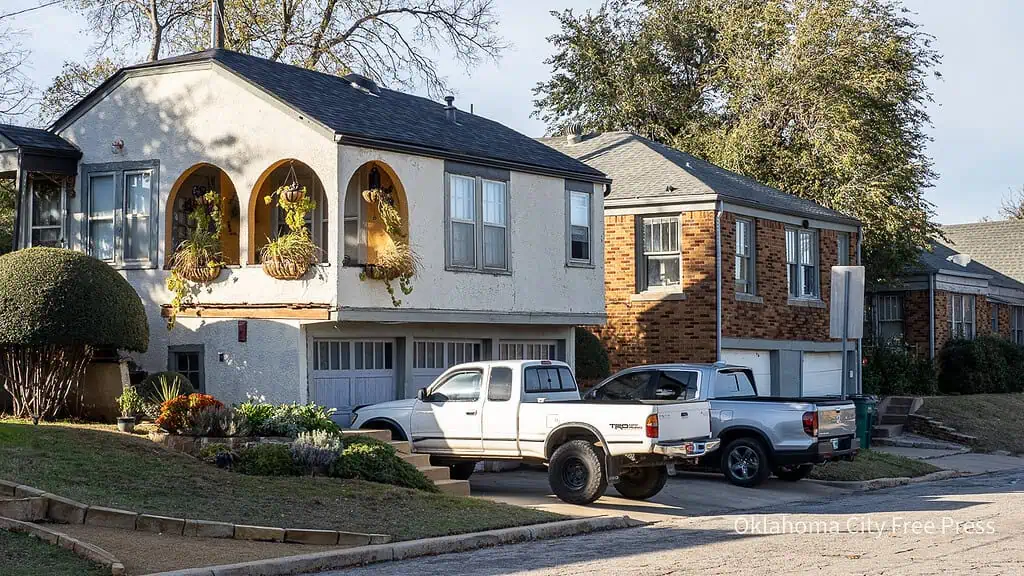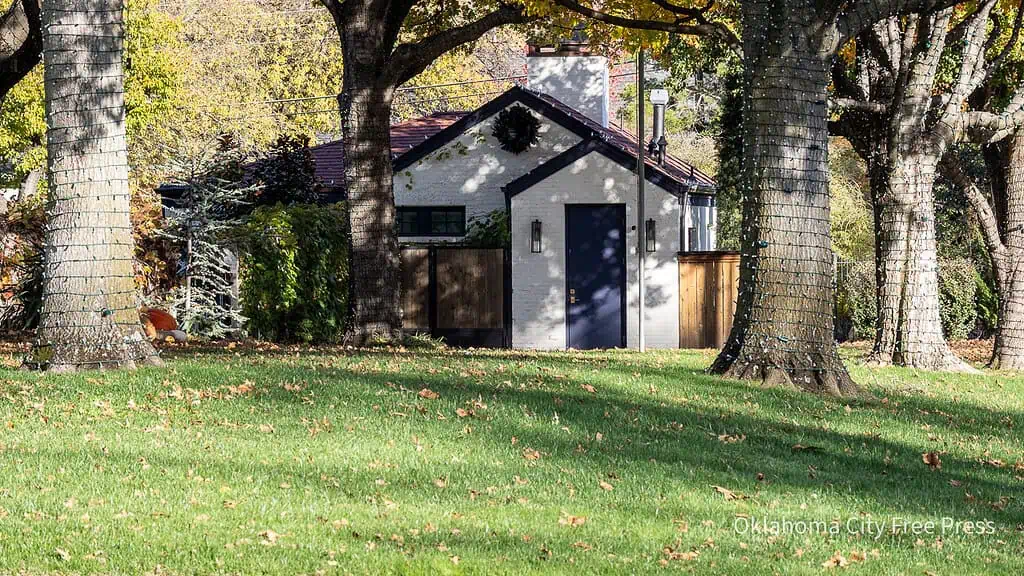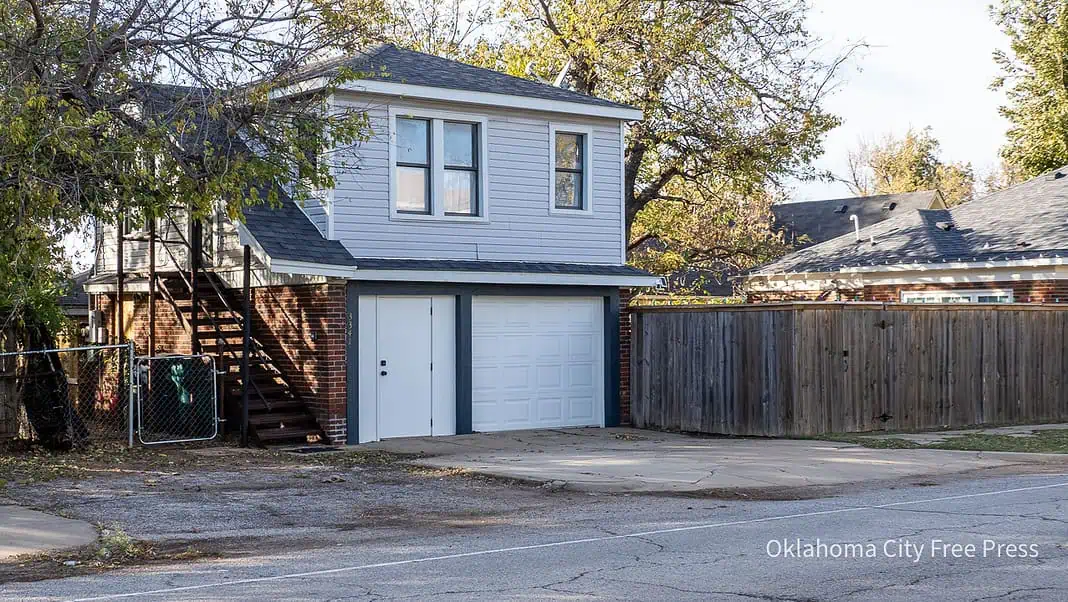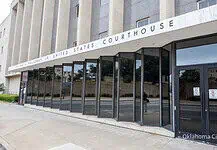OKLAHOMA CITY — The effort to get accessory dwelling units approved and allowed in Oklahoma City took a major step forward this month as the OKC Planning Commission passed the proposal following some significant updates to the plan.
Accessory Dwelling Units, or ADUs, are any small, resident-ready housing structure built on the lot of an existing home, like a garage apartment, backyard house, or “granny flat.”
OKC’s subdivision and zoning regulations have largely outlawed ADUs for decades, but affordable housing proponents and even the City’s own comprehensive plan, PlanOKC, are adamant that allowing ADUs would provide some badly needed relief to the city’s strained housing market.
Following the introduction of a proposal in May to amend city regulations and allow Accessory Dwelling Units in the urban core, planning officials received numerous citizen concerns regarding issues like parking needs, home-sharing, and compatibility with historic neighborhoods.
But then, after months of community outreach efforts and revisions to address those concerns, a retooled version of the proposal was presented at the November 14th Planning Commission meeting, where it passed by a vote of 5-3.
“We’re finished with the Planning Commission now,” Assistant City Planning Director Lisa Chronister told Free Press by phone following the vote. “What goes to City Council now will be this updated plan.”
Neighborhood compatibility concerns
After the May Planning Commission meeting where the original draft of the new ADU ordinance was presented, multiple concerns were raised – including by Ward 2 Planning Commissioner Janis Powers – about the potential for ADUs to upset the character and aesthetics of historic and mid-century neighborhoods in the city core.

Chronister said this was one of the most challenging concerns to address, and that substantial time was spent attempting to determine if regulations could be written to prevent the character of those neighborhoods from being disturbed.
Ultimately, the decision was made to simply carve specific neighborhoods out of the ADU allowance area.
Along with the city’s Historic Preservation neighborhoods (which were never to be included in the allowance area,) the decision was made to also exclude the city’s Historic Landmark districts as well as neighborhoods north of Northwest Expressway to the west and north of NE 50th to the east.
“I think that was the biggest change,” Chronister said about the updates to the plan since May.
She said the decision to remove those neighborhoods along Expressway and 50th from the proposal was made after examining their construction and designs more closely and how they differed from the older neighborhoods to the south.
“Those neighborhoods around Northwest Expressway began to develop in the 1960s, and their development pattern is very different to the properties closer to the core that have been there longer,” she said. “For example, they have attached garages and no vehicular access to the backyard like the neighborhoods closer to Downtown do.”
To avoid attempts at ADU developments in those areas that could potentially be more disruptive or destructive, the decision was made to remove them from the allowance area in the revised plan.
Parking space
Another of the biggest citizen concerns surrounding the allowance of ADUs is the increased parking capacity assumed to be needed for any new neighborhood residents, with many worried that ADU renters will further clog neighborhood streets with on-street parking.
Planning officials revised and tightened the parking regulations for any potential new ADUs to help mitigate those concerns.
Under the revised proposal that passed the Planning Commission, any ADU construction will be required to have dedicated off-street parking unless the street is greater than 26 feet wide and curbed or the ADU is smaller than 600 square feet.
Additionally, no new parking spaces will be allowed in front of the principal dwelling to accommodate ADU residents.

However, Chronister and city planners hope that parking requirements for ADUs will become a smaller problem than many city residents expect.
“A lot of people have voiced that they would use an ADU to home an elderly family member or a disabled family member who needs some independence but needs to be closer to family,” Chronister said. “In many cases, it’s people who aren’t necessarily going to be driving anyway.”
There’s also the growing trend of young city residents relying more heavily on ride-shares and OKC’s increasing public transit options rather than owning a car at all. Those young first-time renters are expected to be a major target demographic for ADU rentals.
“It’s very difficult for some people to imagine that some other people don’t want or need a car because for so long, Oklahoma City was completely car-based, but that has intentionally been changing in the urban core,” Chronister said. “Now we have the BRT, bus lanes, sidewalks, bike lanes. The City has invested heavily in all of that.”
Concerns over home-sharing
When the original ADU ordinance was proposed to the Planning Commission in May, one of city residents’ largest and most immediate concerns was that homeowners would seek to begin constructing ADUs en masse primarily to be used as homeshares like Airbnbs or Vrbos.
Following the Planning Commission’s public comment period for the proposal in June, which saw numerous city respondents voicing their concerns, the decision was made to revise the ADU proposal and table the vote to approve it until after a new home-share ordinance could be presented.
That separate new ordinance was also presented to the Planning Commission this month with the proposal strictly regulating the number of home-shares allowed in a determined area and the application and approval process for operating a home-share.
As per that newly proposed ordinance, the number of home-shares in a neighborhood cannot exceed 10% of the structures, an effort to prevent neighborhoods being largely taken over by home-shares.

Adding to that, the new ADU ordinance stipulates that any ADU operated as a home-share would still count toward that 10% total and that the principal dwelling alongside the ADU must be occupied by the homeowner.
Moreover, while the new ADU ordinance would allow any homeowner in the allowance area to construct an ADU on their property without special exemption, a special exemption will still be required to operate that ADU as a home-share.
Requiring that extra process for home-sharing is expected to prevent an overabundance of new ADU home-shares and to allow greater city and citizen oversight of the number and location of home-shares.
What Chronister said they were not trying to do, however, is entirely prevent or discourage ADUs from being used as home-shares, believing that they could be a benefit for homeowners hoping to generate enough extra income to keep and update their homes, rather than selling.
“If building and renting an accessory dwelling helps you afford the mortgage or the maintenance or updates for the main structure,” she said, “then that’s a win-win.”
The Oklahoma City Council will consider the updates to the home-sharing ordinances in the December 3 meeting.
Opposition and next steps
With the newly revised ADU ordinance now passed by the Planning Commission, it will soon go before the City Council, where it could face some of the same opposition seen in the Planning Commission.
Three of the commissioners voted against the proposal, even with the updated regulations in place.
“In terms of those three ‘no’ votes, I think that they were on board and that they know ADUs are a good thing and are beneficial,” Chronister told Free Press, “but I think they fundamentally couldn’t quite get behind allowing them by right, without public hearings for each one.”

But streamlining the process and making it easier to quickly build ADUs and to fill in development density in the city’s core is the whole point, she said.
“PlanOKC recommends allowing ADUs by right, and a fundamental goal of the new zoning code is to facilitate infill development and to make it easier,” Chronister explained. “’Making it easier’ doesn’t mean allowing them without rules or parameters. There are plenty of rules and parameters. ‘Making it easier’ is just about removing a lengthy rezoning process to allow it to happen.”
The new city ordinance for allowing ADUs in the urban core with be introduced at City Council on December 17th with an open public hearing expected on December 31st before a final vote in January.
Brett Fieldcamp is our Arts and Entertainment Editor. He has been covering arts, entertainment, news, housing, and culture in Oklahoma for 15+ years, writing for several local and state publications. He’s also a musician and songwriter and holds a certification as Specialist of Spirits from The Society of Wine Educators.










